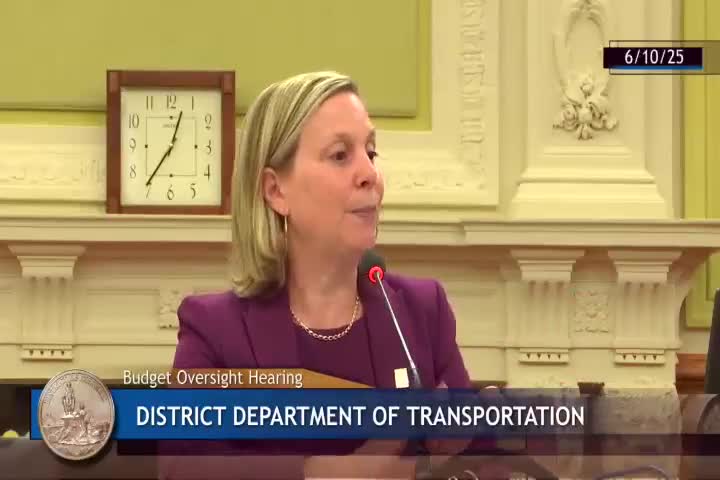Safe Routes to School team addresses traffic issues near Burrows Elementary
June 10, 2025 | Committee on Transportation and the Environment, Committees, Legislative, District of Columbia
This article was created by AI summarizing key points discussed. AI makes mistakes, so for full details and context, please refer to the video of the full meeting. Please report any errors so we can fix them. Report an error »

During a recent budget oversight hearing, the Committee on Transportation and the Environment, led by Chairperson Charles Allen, addressed pressing concerns regarding school traffic management and the impact of upcoming events on local infrastructure.
One of the key discussions centered on the challenges faced by the Safe Routes to School team in ensuring safe access for students while managing traffic flow. Officials acknowledged the difficulty of balancing parking enforcement with the need to keep major transit routes clear, particularly during school hours. There was a consensus that changes are necessary before the next school year, including potential no-parking zones in front of schools to enhance safety for students arriving by foot or bike.
The conversation also highlighted the unique challenges posed by charter schools, which often draw students from various neighborhoods, resulting in increased car traffic. The committee expressed a commitment to collaborate with schools to develop alternative traffic solutions, emphasizing the importance of cooperation from school administrations.
Additionally, concerns were raised about traffic planning processes around schools, specifically regarding the notice of intent for roadway changes. Officials confirmed that any significant changes, such as converting streets to one-way, would require a 30-day notice period, ensuring community input before implementation. This was particularly relevant for Burrows Elementary in Ward 5, where residents feared unannounced changes during ongoing construction.
The meeting also touched on the upcoming parade, which raised questions about potential damage to city streets due to the heavy vehicles involved. While the parade route will primarily utilize National Park Service roadways, officials assured that mitigation measures, including steel planks, are being put in place to protect local infrastructure.
As the committee continues to address these issues, the focus remains on enhancing safety for students and ensuring that community voices are heard in transportation planning. The outcomes of these discussions will play a crucial role in shaping the transportation landscape in the District of Columbia, particularly as the new school year approaches.
One of the key discussions centered on the challenges faced by the Safe Routes to School team in ensuring safe access for students while managing traffic flow. Officials acknowledged the difficulty of balancing parking enforcement with the need to keep major transit routes clear, particularly during school hours. There was a consensus that changes are necessary before the next school year, including potential no-parking zones in front of schools to enhance safety for students arriving by foot or bike.
The conversation also highlighted the unique challenges posed by charter schools, which often draw students from various neighborhoods, resulting in increased car traffic. The committee expressed a commitment to collaborate with schools to develop alternative traffic solutions, emphasizing the importance of cooperation from school administrations.
Additionally, concerns were raised about traffic planning processes around schools, specifically regarding the notice of intent for roadway changes. Officials confirmed that any significant changes, such as converting streets to one-way, would require a 30-day notice period, ensuring community input before implementation. This was particularly relevant for Burrows Elementary in Ward 5, where residents feared unannounced changes during ongoing construction.
The meeting also touched on the upcoming parade, which raised questions about potential damage to city streets due to the heavy vehicles involved. While the parade route will primarily utilize National Park Service roadways, officials assured that mitigation measures, including steel planks, are being put in place to protect local infrastructure.
As the committee continues to address these issues, the focus remains on enhancing safety for students and ensuring that community voices are heard in transportation planning. The outcomes of these discussions will play a crucial role in shaping the transportation landscape in the District of Columbia, particularly as the new school year approaches.
View full meeting
This article is based on a recent meeting—watch the full video and explore the complete transcript for deeper insights into the discussion.
View full meeting